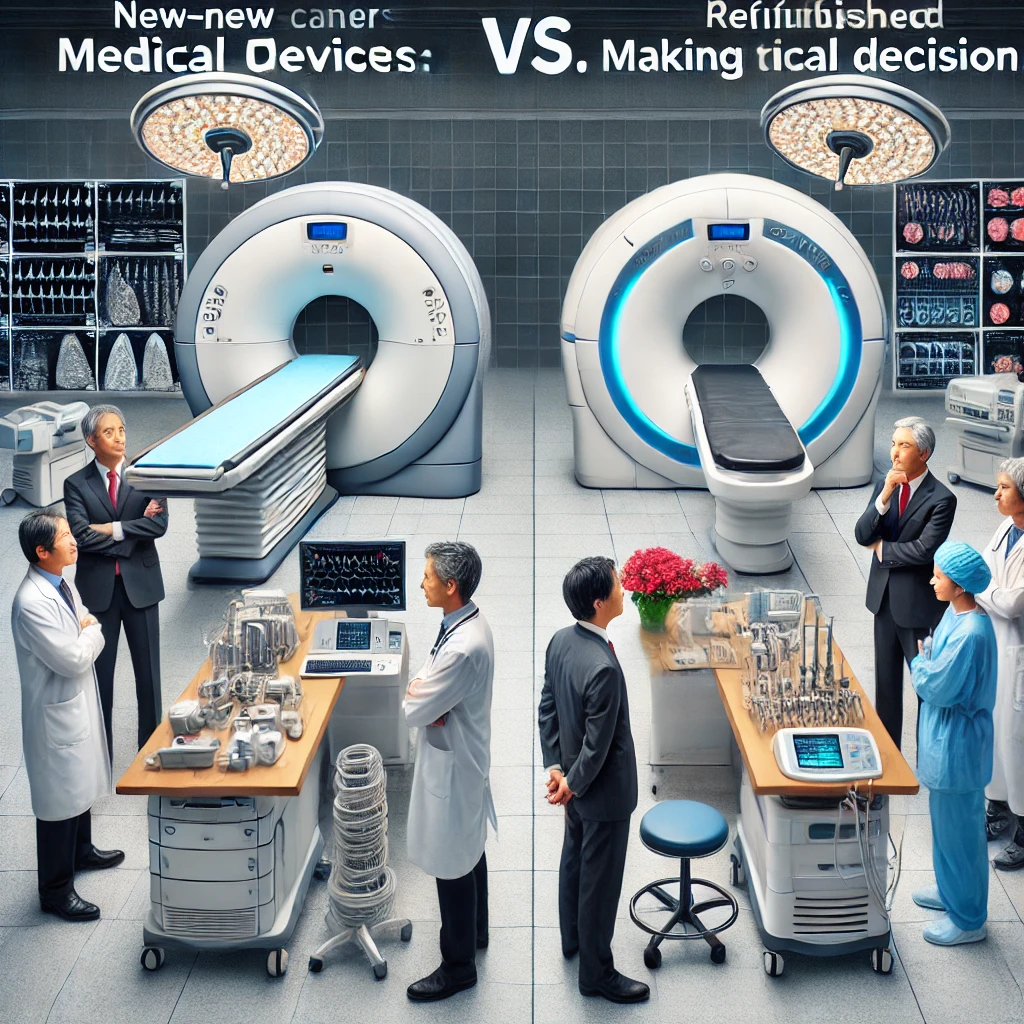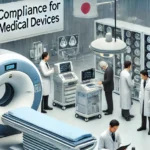

New vs. Refurbished Medical Devices: Making the Decision
In the fast-evolving world of healthcare, medical devices play a critical role in ensuring accurate diagnostics, effective treatments, and improved patient outcomes. However, acquiring these devices—whether cutting-edge surgical tools, imaging systems, or patient monitors—presents a significant financial decision for healthcare providers. Should you invest in brand-new equipment with the latest features, or opt for refurbished devices that promise cost savings without sacrificing quality? The choice between new and refurbished medical devices is complex, influenced by factors like budget, functionality, reliability, and long-term goals. This article explores the key differences, advantages, and considerations to help healthcare facilities make an informed decision.
Understanding New Medical Devices
New medical devices are fresh from the manufacturer, untouched by prior use, and equipped with the latest technology. These devices—whether a state-of-the-art MRI scanner, a robotic surgery system, or a high-resolution ultrasound machine—represent the pinnacle of innovation. They come with full warranties, manufacturer support, and the assurance of pristine condition.
The appeal of new devices lies in their cutting-edge features. For instance, a new CT scanner might offer enhanced imaging resolution or faster processing speeds, while a new surgical robot could include advanced AI integration for precision. These advancements can translate to better patient care, improved diagnostic accuracy, and streamlined workflows. Additionally, new devices often comply with the latest regulatory standards, reducing compliance risks for healthcare providers.
However, the biggest drawback is cost. New medical devices can range from thousands to millions of dollars, depending on their complexity. For example, a new da Vinci Surgical System can exceed $1.5 million, not including maintenance, training, and accessory costs. For many hospitals, clinics, or practices—especially those in resource-limited settings—this price tag is prohibitive, forcing them to weigh the benefits against their budget constraints.
Understanding Refurbished Medical Devices
Refurbished medical devices, on the other hand, are pre-owned units that have been restored to full functionality through a meticulous process of inspection, repair, and testing. These devices may have been lightly used, returned, or retired due to upgrades, but they are brought back to near-original condition by specialized technicians. Reputable refurbishers replace worn parts, recalibrate systems, and ensure compliance with safety and performance standards before resale.
The primary allure of refurbished devices is their affordability. Prices typically range from 30-70% lower than new equipment, making high-quality technology accessible to a broader range of healthcare providers. For instance, a refurbished MRI scanner that originally cost $1 million might be available for $400,000, offering significant savings. Refurbished devices also come with warranties—though shorter than those for new equipment—and support from suppliers, adding a layer of confidence for buyers.
While refurbished devices may lack the very latest features, they often deliver proven performance, leveraging technology that has stood the test of time. A refurbished laparoscopic system from a trusted brand like Olympus or a restored patient monitor from Philips can still meet the demands of modern healthcare with reliability and precision.
Comparing Key Factors
To decide between new and refurbished medical devices, healthcare providers must evaluate several critical factors:
-
- Cost and Budget
Budget is often the driving force behind this decision. New devices require a substantial upfront investment, which may strain finances or necessitate loans. Refurbished devices, by contrast, offer immediate savings, freeing up funds for other priorities like staffing, facility upgrades, or patient services. For smaller practices or facilities in developing regions, refurbished equipment can be a lifeline, enabling access to advanced care without financial overreach.
- Cost and Budget
-
- Performance and Features
New devices typically boast the latest innovations—faster processing, enhanced imaging, or smarter software—that can give clinicians a competitive edge. However, refurbished devices often provide sufficient functionality for most clinical needs. For example, a refurbished ultrasound machine from five years ago may not have 4D imaging, but it can still deliver high-quality 2D scans for routine diagnostics. The question is whether the latest features justify the cost for your specific use case.
- Performance and Features
-
- Reliability and Longevity
New devices come with the assurance of no prior wear, potentially offering a longer lifespan. However, refurbished devices from reputable suppliers undergo rigorous testing to ensure reliability. A well-maintained refurbished surgical tool or imaging system can perform effectively for years, especially if sourced from a country like Japan, known for its durable, high-quality medical equipment. Maintenance history and refurbishment quality are key to assessing longevity.
- Reliability and Longevity
-
- Warranty and Support
New devices typically include extended warranties (often 1-5 years) and direct manufacturer support, minimizing downtime risks. Refurbished devices come with shorter warranties—usually 6 months to 2 years—provided by the refurbisher, not the original manufacturer. While this offers some protection, buyers must ensure the supplier is reputable and responsive to service needs.
- Warranty and Support
-
- Regulatory Compliance
New devices are guaranteed to meet current regulatory standards, such as those set by the FDA or Japan’s PMD Act. Refurbished devices must also comply, but their compliance depends on the refurbisher’s diligence. Purchasing from certified vendors ensures that refurbished equipment adheres to safety and performance guidelines, reducing legal and operational risks.
- Regulatory Compliance
-
- Sustainability
Environmental considerations are increasingly relevant in healthcare. Refurbished devices extend the lifecycle of existing equipment, reducing waste and the demand for raw materials. Choosing refurbished aligns with sustainable practices, an appealing factor for eco-conscious organizations. New devices, while innovative, contribute to higher resource consumption during production.
- Sustainability
Use Cases: When to Choose New or Refurbished
The decision often hinges on the facility’s needs and goals:
-
- Choose New:
-
- When cutting-edge technology is essential (e.g., research hospitals pioneering new procedures).
-
- For long-term investments in high-traffic settings where durability is paramount.
-
- If budget constraints are minimal and compliance with the latest standards is non-negotiable.
-
- Example: A tertiary care center needing a new robotic surgery system to attract top surgeons and patients.
-
- Choose New:
-
- Choose Refurbished:
-
- When budget is a limiting factor but quality cannot be compromised.
-
- For secondary or backup equipment in facilities with existing new devices.
-
- In settings where proven, slightly older technology meets clinical demands (e.g., rural clinics or outpatient centers).
-
- Example: A community hospital acquiring a refurbished MRI to expand diagnostic services affordably.
-
- Choose Refurbished:
Making an Informed Decision
To choose wisely, healthcare providers should follow a structured approach:
-
- Assess Needs: Identify the specific clinical requirements and whether the latest features are necessary.
-
- Evaluate Suppliers: For new devices, research manufacturers; for refurbished, vet refurbishers for certifications, warranties, and track records.
-
- Consider Total Cost of Ownership: Factor in maintenance, training, and potential downtime alongside the purchase price.
-
- Test Performance: Request demonstrations or trial periods, especially for refurbished equipment.
-
- Plan for the Future: Weigh short-term savings against long-term goals, such as scalability or technological upgrades.
Conclusion
The choice between new and refurbished medical devices is not a one-size-fits-all decision—it’s a strategic balance of cost, quality, and purpose. New devices offer unmatched innovation and longevity, ideal for facilities pushing the boundaries of healthcare. Refurbished devices, however, provide a practical, sustainable alternative, delivering proven performance at a lower cost. By carefully evaluating their unique needs, budget, and operational context, healthcare providers can select the option that best supports their mission. In a field where precision and reliability are paramount, both new and refurbished devices have a vital role to play, ensuring that quality care remains within reach.
Add a comment Cancel reply
Related posts


Regulatory Compliance for Refurbished Medical Devices

Refurbished Surgical Instruments from Japan: Precision, Quality, and Value

The Unmatched Precision of Japanese Medical Technology
Japan Address
COMFYS JAPAN LLC, R Cube Aoyama 3rd Floor, 1-3-1 Kita-Aoyama, Minato-ku, Tokyo 107-0061,Japan
Africa Address
Comfys International Limited KP Offices, Suite 26 Milimani, Nairobi, KENYA




